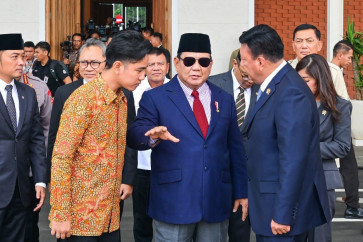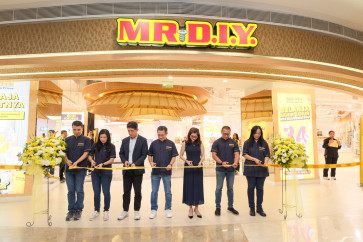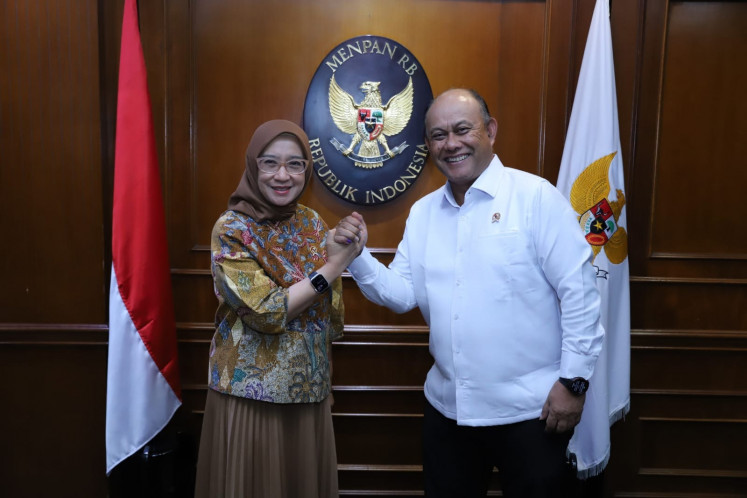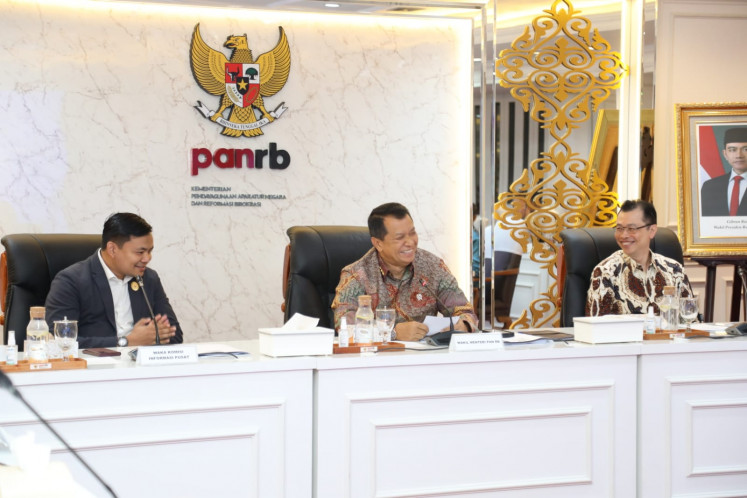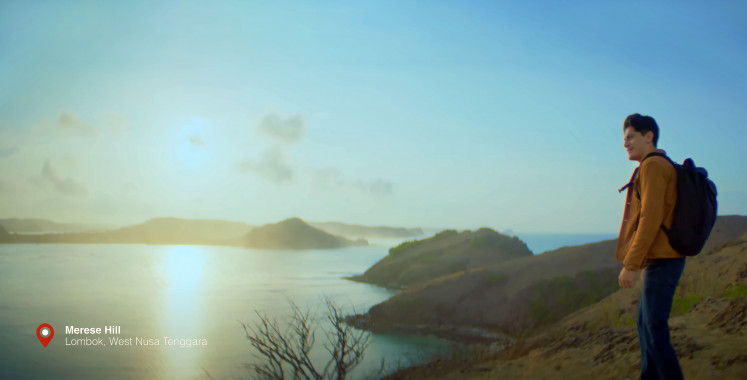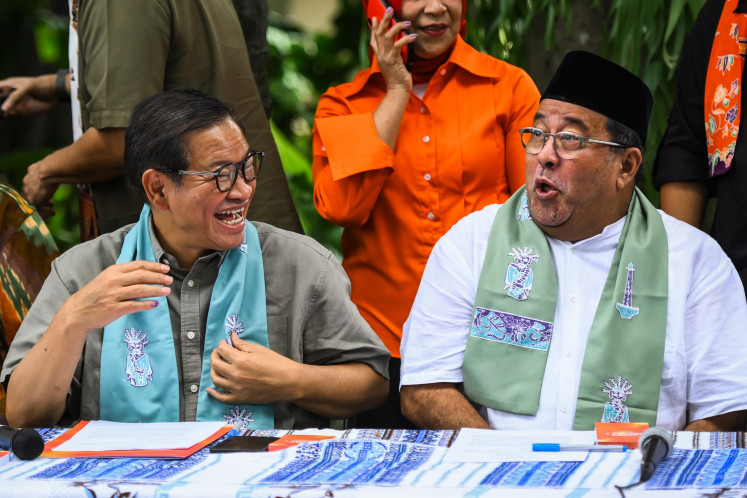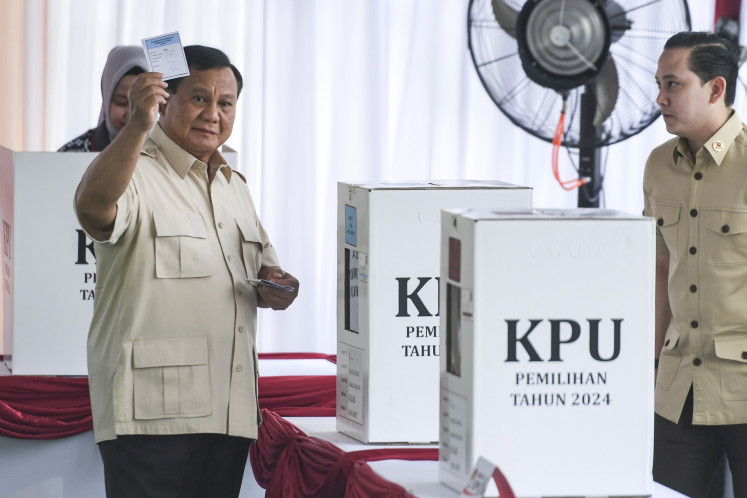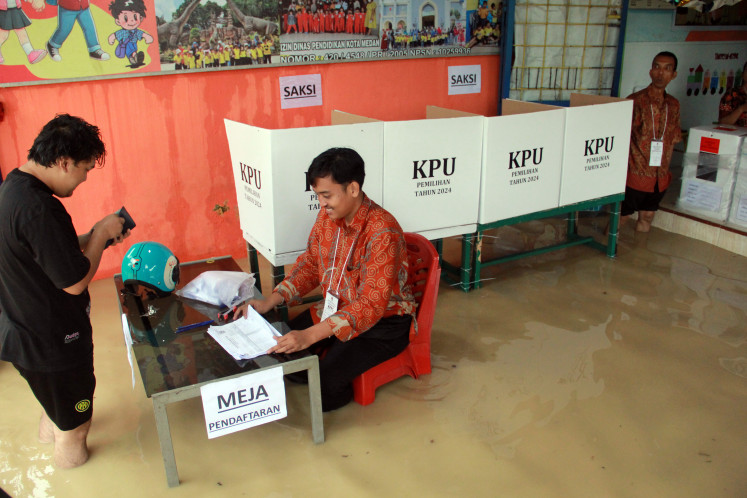Historical fragments of Sriwijaya in Palembang
Palembang in South Sumatra, which we know today as an industrial city, was an international trade hub for a 100 years, beginning with the rise of the Sriwijaya kingdom in the seventh century.
Change text size
Gift Premium Articles
to Anyone
 Relic: A huge stone with ancient writings that date back to the time of the Sriwijaya kingdom. (JP/Seto Wardhana )
Relic: A huge stone with ancient writings that date back to the time of the Sriwijaya kingdom. (JP/Seto Wardhana )
Sebastian Partogi, The Jakarta Post,
Palembang in South Sumatra, which we know today as an industrial city, was an international trade hub for a 100 years, beginning with the rise of the Sriwijaya kingdom in the seventh century.
While conducting research on the kingdom's history, archaeologists have also unearthed the history of the city itself. How do archaeologists work to gain insight into the past, and what are the conclusions of their investigation?
According to National Archaeology Research Center researcher Bambang Budi Utomo, before they venture out into the field, archaeologists study existing literary sources on their research subject, in this case on the Sriwijaya kingdom.
"For example, we read [late British historian] O. W. Wolters' Early Indonesian Commerce: A Study of the Origins of Srivijaya to examine his assumption that the ancient kingdom's hub was located in what we know today as Palembang. We would also take a careful look at the inscriptions he used as evidence to support his hypothesis," Bambang explained.
Furthermore, the researchers will go on a site visit to find artifacts as potential evidence that what we know as Palembang today is an ancient city.
To be categorized as an ancient city, a number of criteria need to be fulfilled by a particular site, including: the existence of written documents; evidence of the involvement in long-distance trade and of a division of labor and specialization among skilled workers as well as evidence of the existence of public spaces.
According to Bambang, Palembang meets all of those criteria. Evidence suggesting that the city was involved in international trade included ceramics from China, beads from India and glass from Persia [now Iran], he added.
The ancient city also had a public park, established in 684, stupas as well as various inscriptions, some of them pointing to the existence of workers specializing in specific skills.
To interpret the artifacts, archaeologists conduct both laboratory and aesthetics analyses.
"For instance, to determine when a particular statue was crafted, we could trace the origins of its aesthetic style. If it is similar to the aesthetic style of the Chola dynasty in South India, for instance, then it was probably crafted in the eleventh century, at a time when locals interacted with people from the kingdom," Bambang explained.
To determine the age of an artifact more precisely, laboratory tests are very useful. "For instance, we can use thermal analysis to measure the amount of heat absorbed by a particular object to determine its age," he said.
After analyzing the objects and how they were used by people in ancient times, archaeologists can start to reconstruct what the ancient city might have looked like.
Bambang lamented that, because of the rural nature of the old South Sumatra city, many of its buildings and temples were made of soluble materials like bricks and wood, which ultimately moldered by air and water after hundreds of years, making the old city almost untraceable.
"This is why it is easy for us to talk about the greatness of the ancient Mataram kingdom (around the 17th century), because its temples -- made of solid rock -- are still visible. Unfortunately, it can be hard to talk about Sriwijaya's greatness for the reason mentioned," Bambang explained.
Most of the artifacts found by the archaeologists are from the northern areas of the Musi River in South Sumatra, where ancient residential complexes were erected in the highlands, resulting in rich amounts of artifacts.
Meanwhile, the Southern areas of the river are assumed to have comprised swamps in the time of the Sriwijaya kingdom. The areas have been dredged to erect the industrial city we know today, demolishing any original structures.


